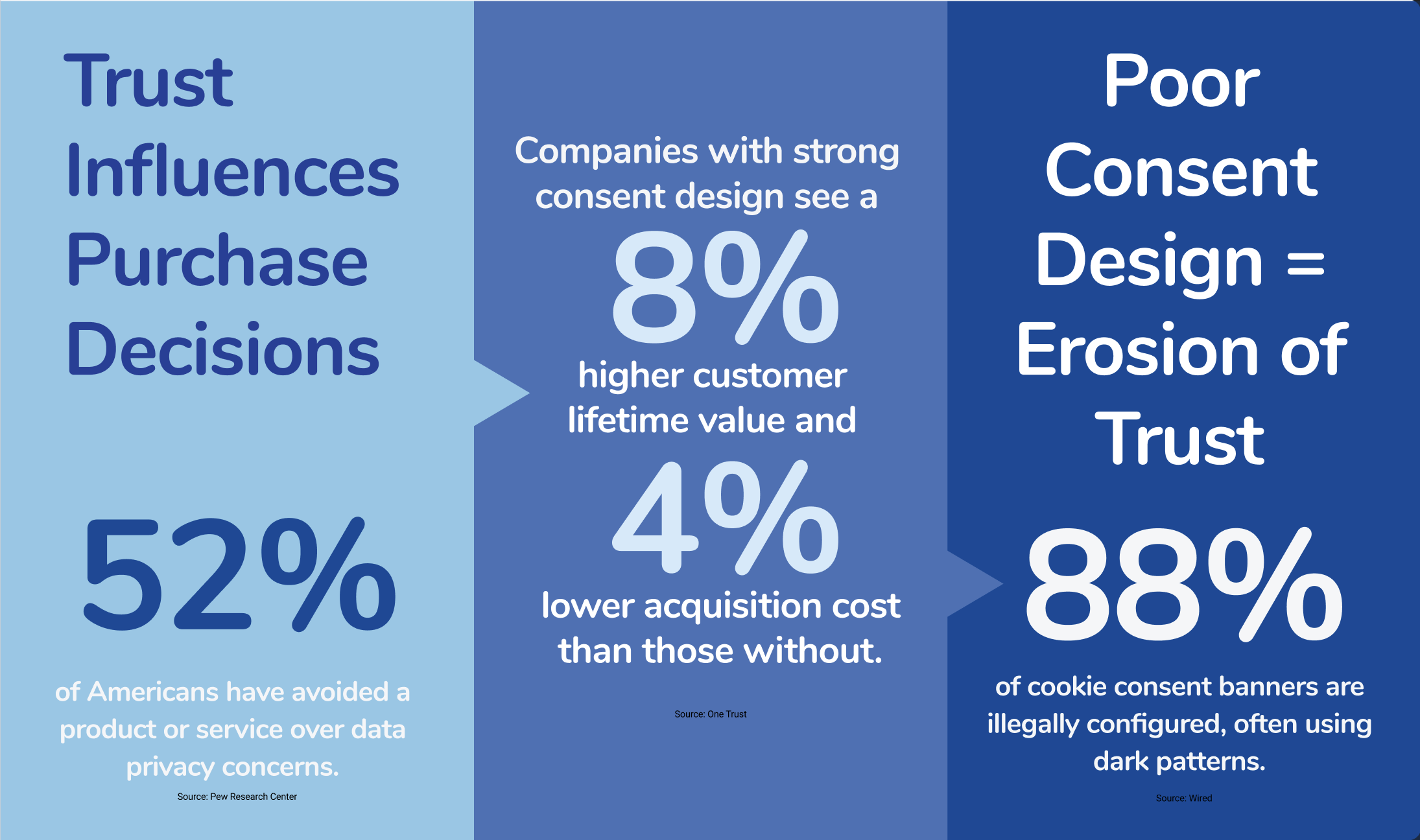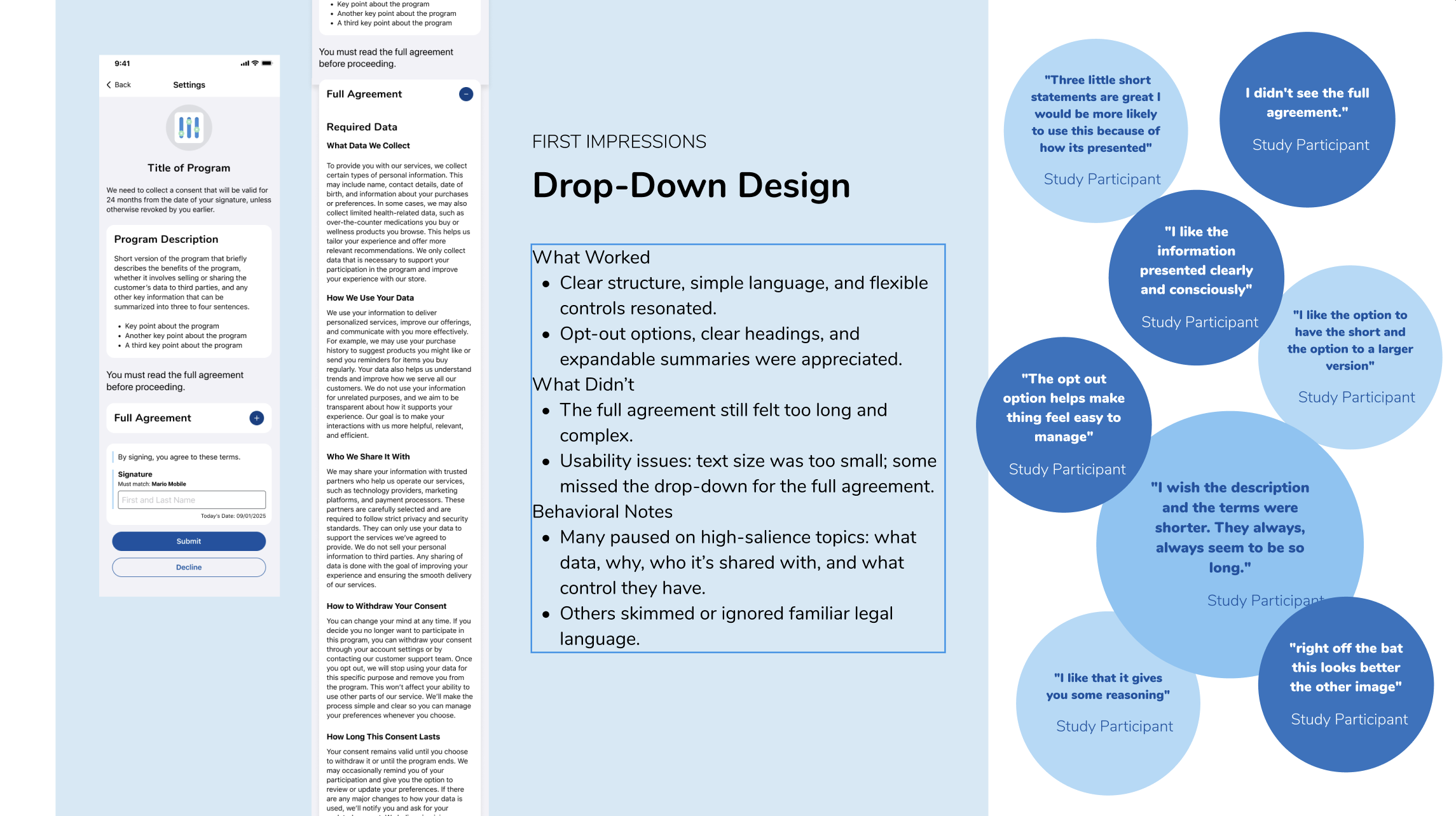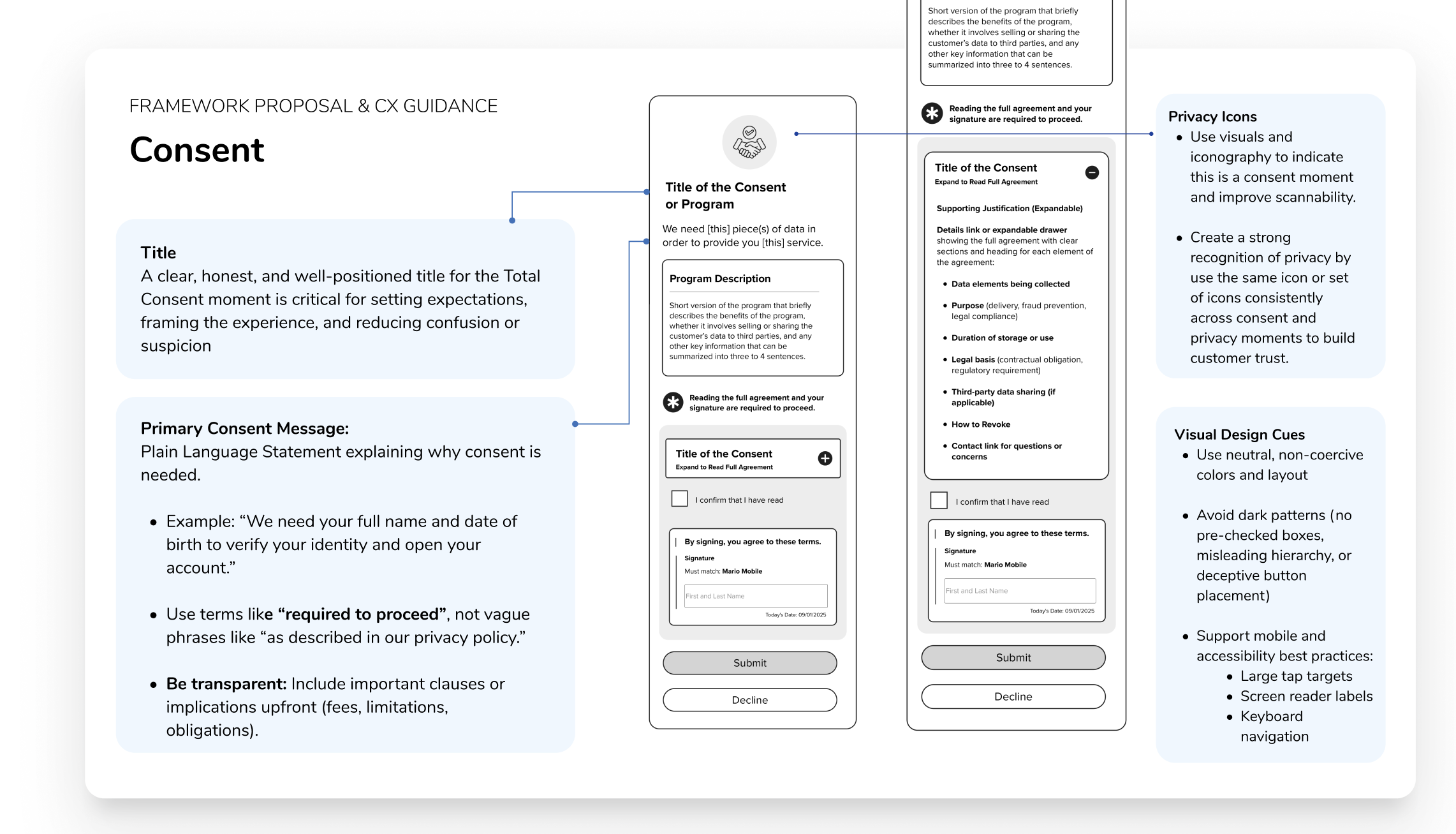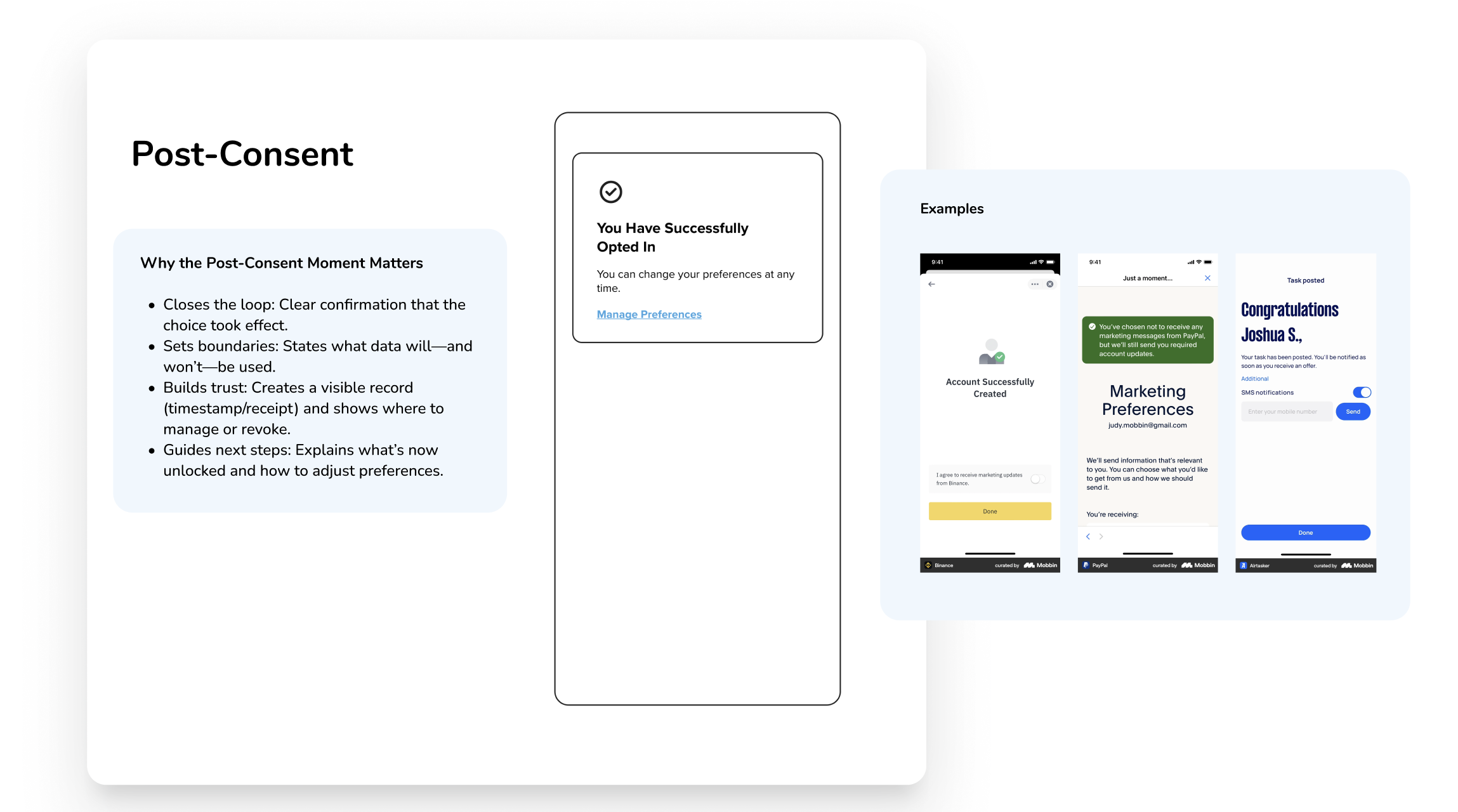Total Consent Design
The Customer Consent Problem
Today, multiple applications handle consent independently and user agreements are presented inconsistently. This results in a fragmented customer experience, extra effort for staff to manage consents, and limited scalability as new consent are introduced.
Consent is the foundation of trusted e-commerce. It gives people clear choice and control over how their data is used—building confidence to browse, personalize, and buy. For businesses, explicit, well-managed consent reduces legal risk, improves data quality, and unlocks compliant personalization that lifts conversion and retention. In short: no consent, no trust; no trust, no growth.
Consent Vision
A future where trust is earned through clear, easy choices; neutral design and language; self-serve controls to manage and revoke consent; and guidance that deepens understanding.
Goals
Easy: Simple, low-friction consent flows
Understandable: Plain language and just-in-time explanations
Consistent: Standard patterns across products and channels
Manageable & Revokable: Self-service dashboards with one-click revoke
Why This Matters
Laws and regulations surrounding privacy and consent are rapidly changing, and the business needs to easily adapt to these changes.
Customers are waking up to and paying more attention to how their data is being used by companies. Concern for data privacy is growing.
When privacy practices aren’t transparent, trust erodes. People need to know what data is used, how it’s used, who it’s shared with, and how to change their choices later.
Research on the topic
Consent Design Study, UX Research, January 2025; n=102 - Findings
I evaluated three alternative designs using a think-aloud usability study with 102 participants. Participants interacted with each design while narrating their decisions and pain points. After the sessions, I collected a brief survey on risk tolerance and privacy stance to contextualize behaviors and segment insights.
Methodology
Study type: Mixed-methods usability test + short attitudinal survey
Protocol: Think-aloud interactions with three designs
Sample: 102 participants
Measures: Qualitative observations, task feedback, and attitudes (risk tolerance, privacy stance)
Analysis: Compared themes and preferences across designs and by risk/privacy profiles
Key Themes
Agreement Engagement
People often accept long agreements without reading—describing them as “blanket” or “rubber-stamp” approvals.
Control & Self-Service
Strong appetite for granular controls (e.g., communication and data-sharing settings) and quick, adjustable preferences.
Consent Management Usability
Toggle-based controls tested well—intuitive, comprehensive, and easy for updating preferences.
Data-Sharing Anxiety
Third-party sharing raises concern; some participants were unsure what they were actually consenting to.
Clarity Drives Trust
Vague or overly complex language erodes trust; participants want plain, specific terms.
Context Matters
Information needs change by moment (first-run vs. managing later, length/complexity of terms). Designs should flex to show more or less detail as needed.
Outcomes of Better Consent
Improving Trust
Transparency about who data is shared with increases trust across privacy segments. In our study, 91% said seeing third-party sharing details improved their trust.*
Strengthening Brand Loyalty
84% reported that easy ways to update or revoke sharing preferences positively impact loyalty.*
Reducing Complexity
Simpler, streamlined consent flows lower the risk that customers can’t manage or revoke consent—reducing complaints and potential legal exposure.
Making Consent Scalable
Standardized, modular consent patterns help teams adapt quickly to new use cases and changing regulations, enabling faster delivery.











